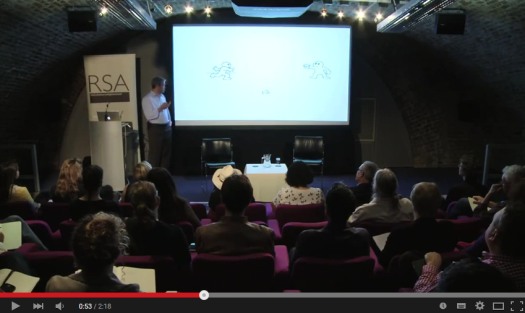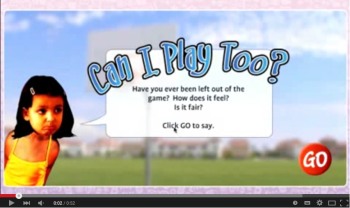Psychology and ELT: Social Exclusion. ‘Why will nobody play with me?
Nick Michelioudakis, Greece
Nick Michelioudakis (B. Econ., Dip. RSA, MSc [TEFL]) is an Academic Consultant with LEH (the representatives of the Pearson PTE G Exams in Greece). In his years of active involvement in the field of ELT he has worked as a teacher, examiner and trainer for both teachers and Oral Examiners. His love of comedy led him to start the ‘Comedy for ELT’ project on YouTube. He has written numerous articles on Methodology, while others from the ‘Psychology and ELT’ series have appeared in many countries. He likes to think of himself as a ‘front-line teacher’ and is interested in one-to-one teaching and student motivation as well as Social and Evolutionary Psychology. When he is not struggling with students, he likes to spend his time in a swimming pool or playing chess. For articles or handouts of his, you can visit his site at www.michelioudakis.org

Menu
A simple game
Inclusion vs ostracism
Implications for ELT
Final words
References
It is the simplest computer game in the world. It is called ‘Cyberball’. The rules are very straightforward. There are three people – two others and yourself (you control a little hand at the bottom of the screen). Each player is in a different room and they are represented by these little people. All these people have to do is toss a ball between them. Each person has a choice of who to toss the ball to. And so the ‘game’ starts. Everything is ok in the beginning; the player pass the ball between them and you get your fair share of passes. But then things change; the other two players gradually proceed to ignore you. They start tossing the ball between them and you are just left sitting dumbly there as the ball moves from one side of the screen to the other. As Professor Lieberman explains, the experience can be excruciating… [to watch the video just click on the picture].

Researchers Van Beest and Williams (2006) were studying social exclusion and came up with the following amazing experimental design: They invited subjects to the lab and they had them play ‘Cyberball’. What they did not tell the subjects of course was that the other two players did not actually exist! The computer had been pre-programmed to respond in a certain way. The subjects however felt they were (virtually) interacting with two other real people. There were two variables in the experiment (‘inclusion – exclusion’ and ‘gain – loss’). This yielded the following four conditions:
- Inclusion – Gain: The other two players (actually the computer!) included you in the game. Each time you caught the ball, you earned 50 cents.
- Inclusion – Loss: The other players included you in the game, but each time you caught the ball you lost 50 cents.
- Exclusion – Gain: After a while the two players stopped throwing the ball in your direction. When they did do though (in the initial stages) you got 50 cents every time that happened.
- Exclusion – Loss: After some time the two players stopped throwing the ball in your direction. When they did throw it to you (in the beginning) you lost 50 cents every time that happened.
After the game was over, the researchers measured people’s level of satisfaction and their mood. Unsurprisingly, people in condition (a) felt happy; they had felt included in the group and they had benefited as a result (the more passes they had received, the more money they got). Again unsurprisingly, people in condition (c) were not happy at all – they had felt excluded and they had lost out as a result. What was amazing however, was what researchers found in condition (d). You would have expected (or rather, rational Economists would have expected) that subjects would have been pleased – true, they had been excluded, but they had made more money as a result! One could imagine them looking at the screen going ‘Please, please do NOT throw the ball in my direction!!’ In fact, this was not the case at all – people in condition (d) were just as hurt as the ones in (c)! When financial gain comes head-to-head with social exclusion, the latter wins. Hands down.
Just in case you thought this was not surprising enough, here is more: in another study, scientists did not even bother to hide the fact that the subjects were in fact playing with a computer – rejection still hurt!! (Zardo et al, 2004)
The basic idea here is that students need to feel they belong to the group if they are to learn effectively. All too often we, the teachers, are so focused on content and methods that we fail to realise that social considerations can trump learning objectives (cf Dornyei & Murphey 2003 – p. 66); quite apart from the misery a feeling of being left out can cause, it can also severely hinder learning.
Evidence for this comes from a study by Baumeister et al (2002). In it, subjects were made to feel socially excluded and were then given an IQ or GRE test. In comparison to a control group, the average performance dropped from 82% to 69% in the former case and from 68% to 39% in the latter.
Group cohesion
Activities which foster group cohesion are not an ‘optional extra’; their role goes far beyond ‘warming students up’ for the ‘serious task of learning’. Fortunately, there is no shortage of resources and it is vital that our lesson plans contain such objectives as well – apart from the linguistic ones (e.g. Moscowitz 1978 or Dornyei 2001 – p.p. 43-44). Dornyei & Murphey (2003) also stress the importance of getting the group to bond, suggesting outdoor experiences as a good way of achieving this (p. 67).

Group fossilization
Some people immediately hit it off with some others and you may find they naturally pair off / form groups together. Although this may help things run smoothly in class and students like being able to choose who they work with, there is always the risk that one or two people might get left out – perhaps the shyer ones or the ones who are ‘different’ in some way. Therefore, it makes sense for the teacher to shuffle the groups occasionally, so they do not ‘fossilise’.
Cooperation
If for whatever reason a student is excluded or there are hostile feelings against him/her from other class members, it might make sense to sometimes pair them off with the very people who dislike him/her in a competitive game against other groups! Research has shown that we like people we cooperate with (we come to see them as members of our in-group – Aronson 1999). The more heated the competition, the more the barriers break down between the people who need to cooperate and the more effective this technique is likely to be.

Awareness raising
Educators have also developed tasks aimed directly at raising awareness of how the excluded students might feel (to watch an example just click on the picture). This can potentially be very effective when this is a common phenomenon or when students join a class at different times during the school year – especially if they come from a different group (e.g. children of immigrants). Having said that, there is always the risk that this might be seen as ‘moralising’ and trigger ‘psychological reactance’. I tend to favour more indirect methods myself…
Labelling
Giving the group its own, distinct name and identity can be a good way of getting everybody to bond. Haidt (2012 – p. 210) stresses the importance of such ‘symbolic markers’ for group membership. Of course, groups usually unite ‘against’ other groups (e.g. ‘Gryffindor’ vs ‘Slytherin’) and teachers sometimes feel uneasy about this, yet if done in a playful way it can lead to lots of fun – I have even seen this in summer schools in the UK where people enter into the spirit of things even though the courses only last 2-3 weeks!
Redirecting
An interesting way of helping students who might feel excluded (e.g. because they are from a different ethnic group) was the one tried in a study by Walton and Cohen (2011). They showed African-American Yale students a video of an older student in which he talked about how he was initially worried about not fitting in, but that his fears had proved unfounded. This simple intervention led to an average rise in the academic performance of the target group’s GPA of 0.2 (e.g. from 3.4 to 3.6) compared to a control group which is remarkable considering the minimal investment in time and effort involved.
A serious danger
Incredible though this may sound, sometimes groups unite – against one of their members! This is usually a child which is in some way different and which either everyone dislikes or everyone makes fun of. Amazingly, that child can act as a cohesive force – research has shown that sharing things we dislike brings us closer than sharing things we like (Bosson, J. K. et al 2006) Needless to say, this can be horrible for the child who is singled out (for a fascinating and scary portrayal of this phenomenon I strongly recommend the brilliant short story “The New Kid” by Murray Heyert).
Why does such a thing happen? Why is social exclusion so painful? Kanazawa (2012 p. 35) offers the following explanation: in the ancestral environment there were no scientists carrying out experiments in labs; in the ancestral environment, being shunned by the group meant certain death. There was no such thing as ‘beneficial exclusion’. For the important things in life, evolution has fitted us with direct, emotional responses. We don’t think ‘This fruit tastes delicious’ – we feel it; we don’t think ‘This guy is hitting on my girlfriend – how should I feel?’ we just seethe with jealousy! Social exclusion is one of these important things. Other studies using fMRI have shown that the pain of being excluded registers in the same brain area that registers physical pain (Eisenberger et al, 2003). Guess when the pain is more intense – when those excluding you are members of your ‘in-group’…. (Dunbar 2012 p. 190)
Aronson, E. “The Social Animal” Worth – Freeman, 1999
Baumeister, R. F., Twenge, J. M. & Nuss, C. K. (2002) "Effects of social exclusion on cognitive processes: Anticipated aloneness reduces intelligent thought." Journal of Personality and Social Psychology, 83(4), 817
Bosson, J. K., Johnson, A. B., Niederhoffer, K. & Swann W. B. Jr (2006) “Interpersonal Chemistry Through Negativity: Bonding by Sharing Negative Attitudes About Others” Personal Relationships, 13, pp. 135-150
Dornyei, Z. “Motivational Strategies in the Language Classroom” Cambridge 2001
Dornyei, Z. & Murphey, T. “Group Dynamics in the Language Classroom” Cambridge 2003
Dunbar, R. “The Science of Love and Betrayal” Faber and Faber 2012
Eisenberger, N. I., Lieberman, M. D. & Williams, K. D. (2003) “Does Rejection Hurt?: An fMRI Study of Social Exclusion” Science 302: 290-292
Haidt, J. “The Righteous Mind” Allen Lane 2012
Heyert, M. “The New Kid” (Copyright 1944)
Kanazawa, S. “The Intelligence Paradox” Wiley 2012
Moscowitz, G. “Caring and Sharing in the Foreign Language Class” Newbury House, Cambridge Massachusetts 1978
Van Beest, I & Williams, K. D. (2006) “When Inclusion Costs and Ostracism Pays, Ostracism Still Hurts” Journal of Personality and Social Psychology 91: 918-928
Walton, G. M. & Cohen, G. L. (2011) "A brief social-belonging intervention improves academic and health outcomes of minority students." Science, 331(6023), 1447-1451
Zardo, L, Williams, K.D., Richardson, R (2004) “How low can you go? Ostracism by a computer lowers belonging, control, self-esteem and meaningful existence” Journal of Experimental Social Psychology 40, pp. 560-567

Please check the Dealing with Difficult Learners course at Pilgrims website.
Please check the How the Motivate your Students course at Pilgrims website.
Please check the Building Positive Group Dynamics course at Pilgrims website.


|